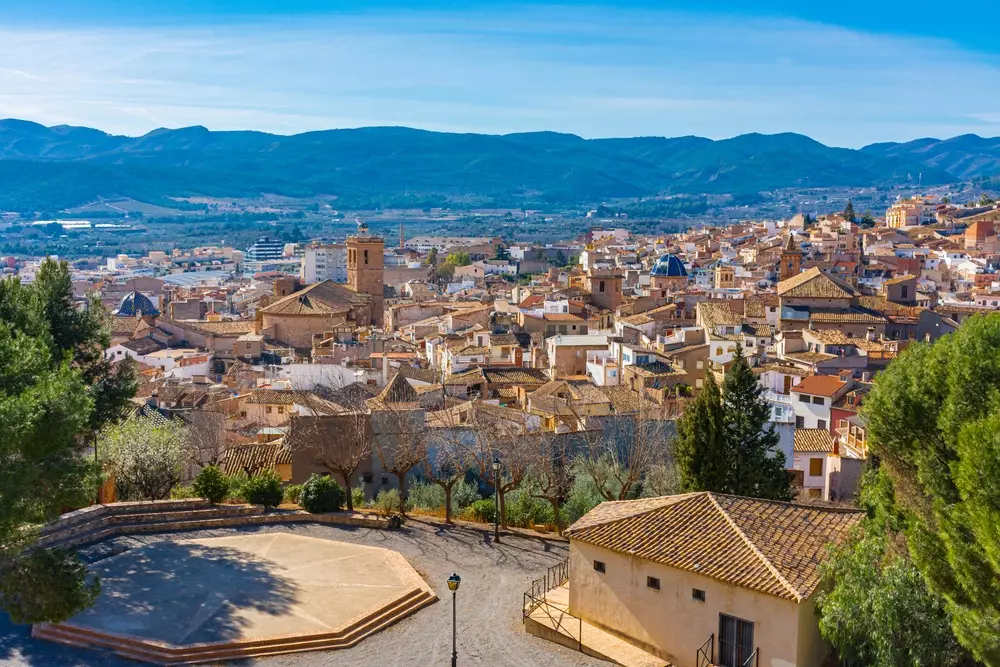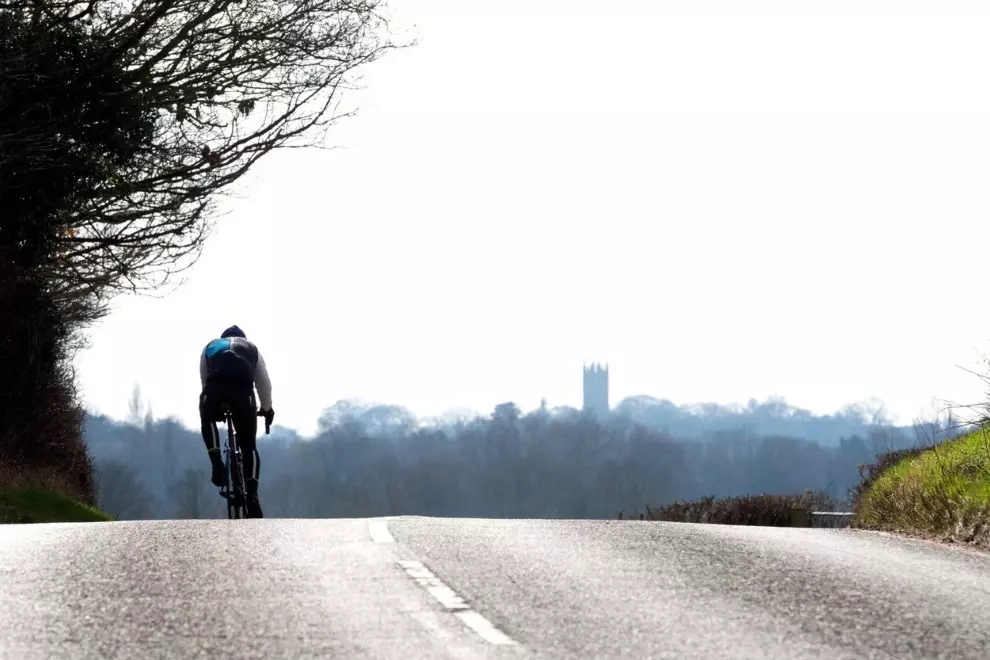While neighbouring France often takes cyclists’ attention with its iconic routes and the Tour de France, Spain is definitely not something you should just scratch off your bucket list. On the contrary, if you have some free time in late winter and early spring, Spain might be the perfect place to start burning those damn calories you’ve been gathering since the Christmas markets opened up. For now, however, grab a glass of sangria and let’s talk about the best places you should ride in Spain.
Albufera Natural Park Tour from Valencia
What better place to start our tour than sunny Valencia? This Mediterranean city has much to offer non-cyclists, so if your significant other is not too keen to pedal on their vacation, they can still enjoy the gorgeous beaches, delicious food and the night fiestas while you are touring the region. Most routes around Valencia will satisfy your thirst for a cycling adventure, but a tour around Albufera Natural Park is the cherry on top.
The route itself is pretty easy, although you need to reserve half a day for it at least. The whole tour is about 86 kilometres, and there are barely any climbs. Most of the time, you will ride on asphalt and paved surfaces, while around one kilometre will be on cobblestones. The most challenging climb during the tour (if you can even call a 30-metre ascend a climb) is about a 6% gradient, lasting for less than 500 metres.

You will start your journey from the train station and make your way south to Sueca. This picturesque little town is about 35 kilometres from the start, and it’s a nice place to get some coffee or beer. From there, you will go to the seaside, where you can see one of the most beautiful places on the entire Spanish Mediterranean coast: Faro de Cullera. This is the midway point, and after the spectacular view, you will continue back to Valencia, this time, however, right along the coastline. Nature is simply mesmerising there, and if you are up for it, you can even take a quick swim in the sea.
On your way back, you will have the opportunity to see lake l’Albufera in all its glory. This route is for those who prefer laid-back experiences with a lot to see and without too much sweat. Still, if you want to finish it in less than five hours, you must put some effort into the pedalling.
Soneja – Segorbe – Soneja
Here’s another easy and laid-back route in Spain that combines some unforgettable views with beautiful medieval towns and the most famous greenway in Spain, Via Verde Ojos Negros. This dedicated cycling road can definitely ruin your aspiration for new records. With its breath-taking beauty, you will want to stop and take a snap every two minutes or so. Thankfully the whole road from Soneja to Segorbe and back is about 27 kilometres, and you can take all the time you want. The route is predominantly flat as you ascend and descend 270 metres over the trace. There are no particularly tough climbs along the way, as the biggest gradient you will have to conquer is about 4%.
The first half of the tour is mostly climbing, though it doesn’t take much effort. You will start your journey from the train station at Soneya as you will ride the famous Via Verde Ojos Negros. This will take you Northwest to the unremarkable town of Altura, and you will continue north to Navajas. With a slight detour, you can enjoy the spectacular waterfall at Salto de la Novia. It’s a great place to have a picnic if you are into this kind of experience. Otherwise, if you are with your significant other, this would be one hell of a place to propose (wink, wink).
On your way back, you can stop at Segorbe, where we suggest taking a slight detour to the Castillo de la Estrella. Segorbe is not only an incredibly charming little town, but also one of the cycling centres in Spain. From here you can take many picturesque routes. So, if you are not in a hurry, you can take two or three days in the town just to experience some other routes as well. Otherwise, there are about six-kilometres of descent to the starting point at Soneja.

This epic ride is perfect for couples or leisure journeys. However, if you want to put some extra effort into this tour, it allows you to race as many laps as you wish on this mesmerising route.
Mallorca – the famous Cap de Formentor
Leaving continental Europe, we can finally land in the mecca of all cyclists during the winter: Mallorca. The mild weather on this Mediterranean island allows cycling the whole year, though, in the scourge of summer, we’d say it’s better to stay close to the beach with some sangria in hand. Still, for spring riding, Mallorca is, without a doubt, among the favourite spots of many professional cyclists.
While the island provides countless opportunities for cyclists to test their endurance and speed, one route is simply a must if you ever visit this paradise-like island: Cap de Formentor.
The route is roughly 11 kilometres one way (22 kilometres with the return trip) and will take you to the island’s northernmost point. Over the 11 kilometres, you must climb 256 metres and conquer up to 10% gradients. The kicker is that you will start from sea level and have to go up 200 metres in the first 4 kilometres. While not the most challenging climb in your life, that route is definitely not the easiest out there.
Your journey will start near the mesmerising Platja de Formentor. Don’t forget to take some snaps after the ride on this heavenly beach, and you can even relax your muscles in the water.
The route itself is stunning. It starts with a forest road which you will have to share with some other vehicles. Still, being one of Spain’s most popular cycling destinations, you can be sure that drivers are extra careful. After the halfway point, the woods will reside and leave you with a genuinely majestic view of the sapphire waters of the Mediterranean. You will pass through several outstanding photo points, but resist the urge to stop when you are coming back.
Though challenging, this ride takes between 16 and 20 minutes to finish. In the end, you will see the Far de Formentor, where you can take some of the best pictures of your life. On your way back, be sure to take your time and check all the marvellous scenes that open before you start the five-kilometre descent back to the starting point.
This is one ride that can be both challenging and extremely romantic in nature. You can push yourself and try to beat the 16:13 minute record, or you can take your time and enjoy the scenery. It’s entirely up to you.
El Teide Tour from Punta Brava
Are you ready for a true challenge? If so, we will take you to another Spanish island – Tenerife. Riding on Tenerife is an unparalleled joy, as it offers some pretty steep climbs, mesmerising views, and delicious food. But, of course, the biggest attraction on the island is the highest volcano in the European Union, El Teide. While we will strongly suggest having a hike on this 3,718-metre sleeping behemoth, you shouldn’t miss the opportunity to enjoy some serious cycling in the region.
Naturally, any trail you take on this island will be beautiful, but if you are up for a real challenge, we must insist on trying the El Teide Tour from Punta Brava. The ride will take you from the sea to over 2.3 kilometres above it in just under 40 kilometres. This ride is definitely not for anything but well-prepared and trained cyclists. This tour will test your mental and physical capabilities to the max and will be one of the most challenging rides of your life. The entire route is around 100 kilometres, with gradients going as high as 31%.

In the first quarter, you will enjoy some mesmerising views of the Atlantic Ocean. If you are lucky enough to have some clear weather, you can even see the smoking volcano of the neighbouring La Palma.
The second quarter will offer you some very heavy climbing. Still, try to check out the remarkable nature around you.
After halfway, you will be predominantly descending, and you will have the chance to see the dotted Gran Canaria, Fuerteventura and Lanzarote on the horizon. Be prepared for some strong wind, as these islands are famous for their unrelenting air streams.
This ride is truly a trial of your endurance. The ride will take around six and a half hours, but if you are up to the challenge, try to finish it in under six.
Col du Pourtalet
We finish with the creme de la creme of Spanish cycling: Frontera del Portalet, also known as Col du Pourtalet. Why the French? Well, the finish line is right on the French border, so you can climb it on both sides. The Spanish one, however, is by far the better choice. Not only do you start from the picturesque town of Biescas, but along the road, there is some mesmerising scenery. You will enjoy some lush green forests before they start residing, leaving space for imposing rocks on both sides of the road.
This 26.7-kilometre route is entirely a climb. On average, you will have to pedal up a 4% gradient, but it will sometimes get to 12%. The higher you climb, the harder it will be. During the ride, you will have to conquer nearly one kilometre of ascent. Along the way, you will have the privilege of riding next to the mesmerising Embalse de Bubal as well as Embalse de Lanuza.
At the top, you will be able to see both France and Spain, which is a prize on its own. This ride usually takes around 65-70 minutes to complete. Still, if you are up to the challenge, currently, the record is 52:16. So, are you ready to take that on?
No need to go to Spain
If you want to beat the Col du Pourtalet record, you don’t need to waste several thousand Euros getting there. All you need is your trusted cyclo-trainer and ROUVY. ROUVY is an Augmented Reality simulator that connects to your trainer and offers you the chance to ride some of the most iconic roads not only in Spain but the entire world as if you were there yourself. Furthermore, if you have a smart trainer, Rouvy will automatically change the resistance as you climb higher-grade ascents. So, what is your excuse now for not climbing Col du Pourtalet in under 50 minutes?
We have another challenge for you
If you think you’re not ready to beat such a record, we at We Love Cycling have another challenge for you. We decided to celebrate our partnership with Rouvy by inviting you to join a race against the clock in Madrid. So naturally, we chose none other than the last stage of La Vuelta 2022, so you can feel like part of the Peleton, or better yet, feel like Remco Evenepoel, who won last year’s Tour of Spain.
The route will take you on a 25-kilometre journey across the Madrid suburbs. The race has everything. Climbs, speed sections, spring sections and, of course, one truly epic descending finish where you can show how fast you can sprint.
Currently, the best time is 32:36.16. Are you ready to answer our call and beat that time? See you in ROUVY!





